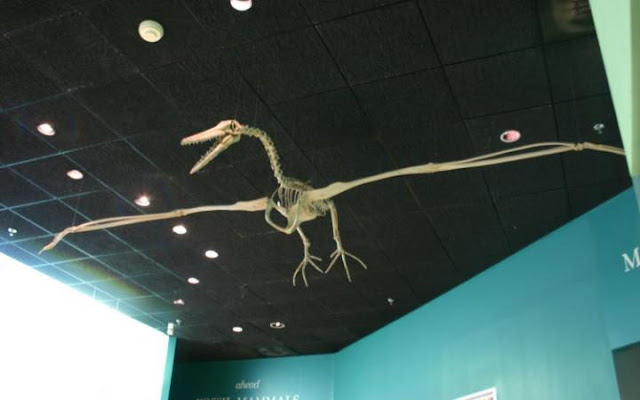Giant prehistoric bird fossils found in Antarctica
 |
| Representative Image: A replica of a Pelagornis skeleton at the National Museum of Natural History. Credit: Ryan Somma/wiki |
Scientists on Wednesday said they have found the remains of a giant prehistoric bird that lived 50 million years ago in Antarctica and had the largest wingspan ever recorded.
Paleontologists at a natural history museum in Argentina said they had identified the pelagornithid, or bony-toothed bird, nearly three years after its fossilized bones were first found at an Argentine research base on the Antarctic island of Marambio.
"Almost three years ago, remains began to appear of what we believed could be this bird. Then we found a bone that confirmed that it was a pelagornithid," an extinct family of enormous seabirds, said Carolina Acosta Hospitaleche, a researcher on the project.
Her colleague Marcos Cenizo, the director of the Natural Sciences Museum of La Pampa, said the bird was the largest pelagornithid specimen ever found.
"The shape of their wings allowed them to glide and cross large distances across the oceans," he said.
Antarctica specialists say there were two kinds of pelagornithid on the continent, one that reached up to five meters tall, with a similar wingspan, and another that stood more than seven meters.
The birds likely developed to their monstrous size some 50 million years ago, when warming ocean temperatures would have given them an abundance of food to thrive, the researchers said.
But the recently identified specimen would have been quite light despite its stature—30 to 35 kilograms (66 to 77 pounds), Cenizo said.
"Almost like a feather."
The researchers published the findings in the Journal of Paleontology.


Comments
Post a Comment